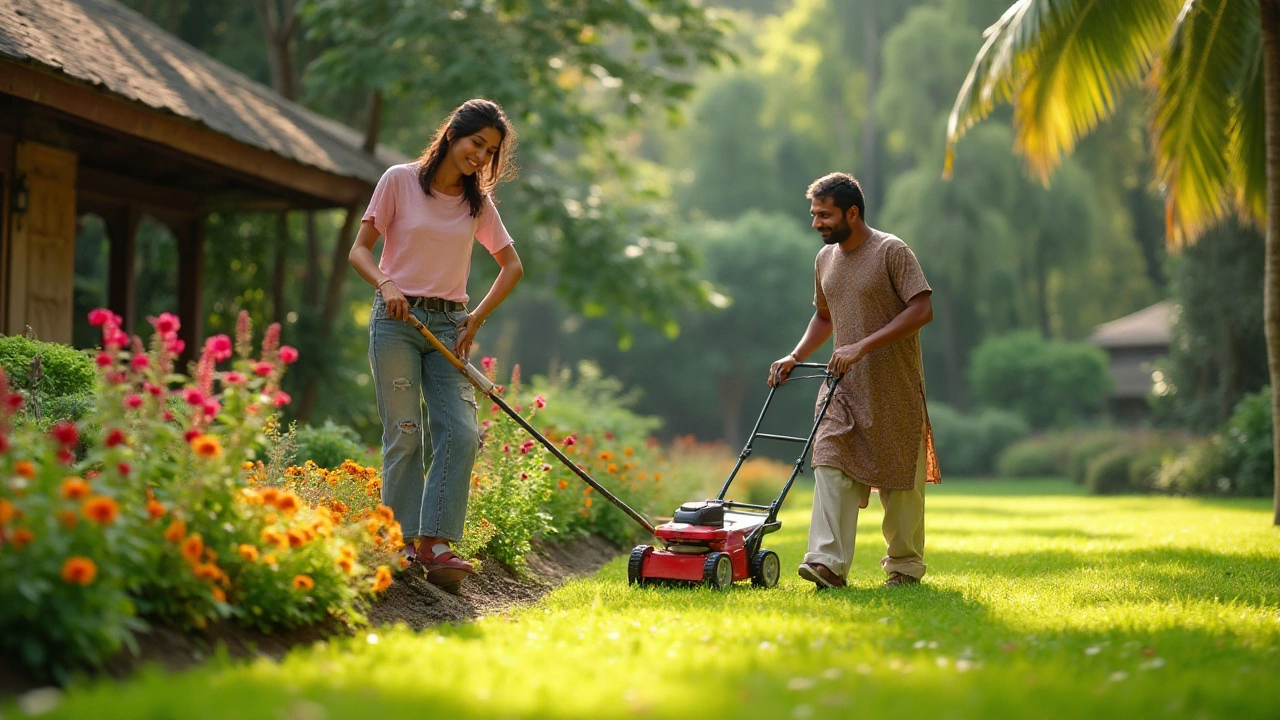Lawn Care: Tips, Tools, and Common Mistakes Every Homeowner Should Know
When you think about lawn care, the ongoing maintenance of residential grass areas to keep them healthy, green, and free of weeds. Also known as grass maintenance, it's not just about cutting the grass—it's about understanding soil, water, seasons, and the hidden needs of your yard. Most people treat their lawn like a rug that needs vacuuming, but grass is a living system. It reacts to how you cut it, how much you water it, and what you put on the soil. Skip the basics, and you’ll end up with thin patches, weeds, or worse—a lawn that dies in summer heat.
Lawn mowing, the regular cutting of grass to maintain height and encourage dense growth. Also known as grass cutting, it’s the most visible part of lawn care, but also the most misunderstood. Cutting too short stresses the grass, weakens roots, and lets weeds take over. Most lawns do best at 2.5 to 3.5 inches. Never remove more than a third of the blade in one go. And always sharpen your mower blades—dull blades tear grass instead of cutting it, leaving brown tips and inviting disease.
Lawn fertilizer, nutrient applications that feed grass and support root development. Also known as grass feed, it’s not something you apply every month. Too much fertilizer burns the grass. Too little leaves it pale and weak. Most lawns in temperate climates only need two to four applications a year—spring and fall are key. Look for slow-release formulas with nitrogen, phosphorus, and potassium in balanced ratios. And never fertilize right before heavy rain—you’re just washing money down the drain.
Lawn irrigation, the controlled watering of grass to maintain moisture without waste. Also known as lawn watering, it’s where most homeowners go wrong. Watering daily for 10 minutes? That’s a recipe for shallow roots and disease. Grass needs deep, infrequent watering—about 1 inch per week, delivered in one or two sessions. Early morning is best: less evaporation, less fungal growth. If your sprinklers run during the day, you’re losing half your water to heat. And if you’re using a hose on a timer, make sure it’s actually reaching every corner. Uneven watering creates patchy lawns.
It’s not just about what you do—it’s what you avoid. Piling mulch against tree trunks? That invites rot. Using weed killer on a stressed lawn? That’s asking for disaster. Leaving grass clippings on the lawn? That’s actually good—they return nutrients. And skipping fall aeration? You’re compacting the soil year after year, making it harder for roots to breathe.
The best lawns aren’t the ones with the fanciest equipment—they’re the ones tended with consistency and understanding. You don’t need a professional team. You need to know when to cut, when to water, when to feed, and when to leave it alone. The posts below break down real cases: how one homeowner fixed a dying lawn with just three changes, why your neighbor’s grass stays green while yours turns brown, and what the top UK landscapers actually do differently. You’ll find cost breakdowns for tools, seasonal checklists, and fixes for common problems like moss, thatch, and bare spots. No fluff. No theory. Just what works.
Essential Yard Work Tasks for a Well-Maintained Landscape
Yard work includes a variety of tasks essential for maintaining a beautiful and functional outdoor space. These tasks range from basic lawn care like mowing and edging to more involved jobs such as pruning, planting, and mulching. Effective yard work not only enhances the aesthetic appeal of your yard but also promotes a healthy and thriving environment. Whether you hire a professional or tackle it yourself, understanding what yard work entails can make all the difference in creating your ideal landscape.
Learn more...